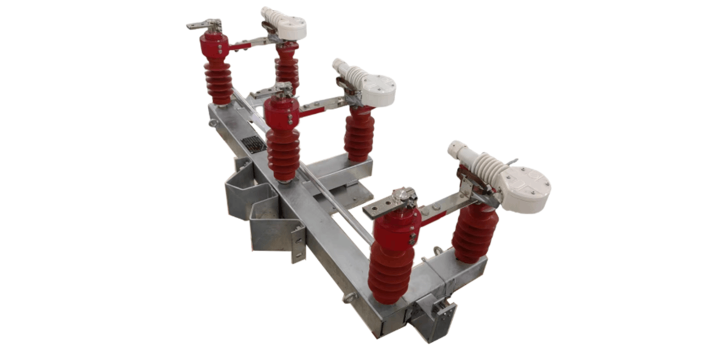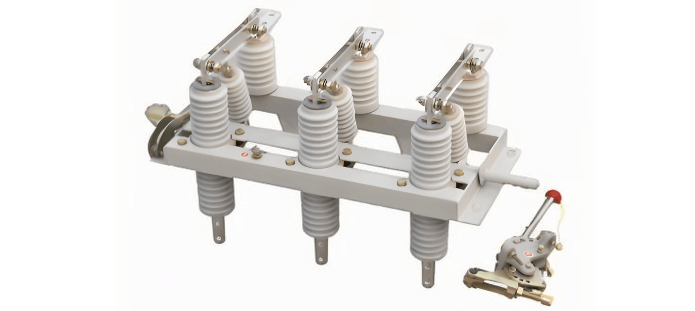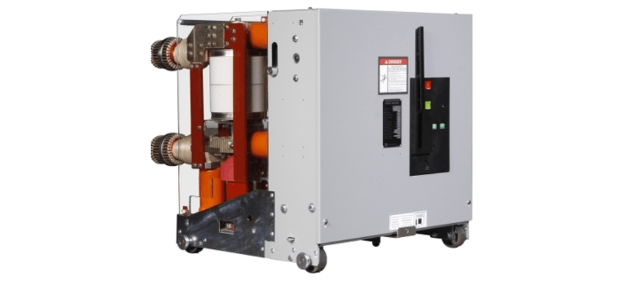Zai na shi Load Break Switch?
Load break switch ita ce tsohon karamin zafi da take da yanayi mai karfi, zai iya koyar da kuma bude masana ciki a kan zaman lafiya. Zai iya koyar da adadin karamin zafi da kuma karamin zafi mai yawa, amma ba zai iya koyar da karamin zafi mai karfi. Saboda haka, ya kamata a yi amfani da ta a tsakiyar da high-voltage fuse, da a yi amanan a gaba-gaban high-voltage fuse don in koyar da abubuwa mai karfi.
Yanayin Load Break Switch:
Interrupting and Making Function: Saboda yanayin da ke da take da yanayi mai karfi, load break switch zai iya amfani da shi don koyar da kuma bude adadin karamin zafi da karamin zafi mai yawa har zuwa waɗanda (kadan 3-4 daga). Zai iya amfani da shi don koyar da karamin zafi mai yawa mafi yawa, karamin zafi mai yawa, da kuma karamin zafi mai yawa mafi yawa.
Substitution Function: Aikin load break switch da current-limiting fuse a tsakiya zai iya haifar da circuit breaker. Load break switch zai iya koyar da karamin zafi da karamin zafi mai yawa mafi yawa, saboda haka, current-limiting fuse zai iya koyar da karamin zafi mai yawa mafi yawa da karamin zafi mai karfi duka.
Combined Device: Aikin da aka haifar da load break switch da current-limiting fuse a tsakiya ana kiranta a cikin national standards a matsayin "Switch-Fuse Combination". Fuse zai iya amfani da shi a kan gabashin supply ko gabashin load. Idan an yi tabbaciwa wajen rubuta fuse ba ci gaba, ya kamata a amfani da shi a gabashin supply, don haka load break switch zai iya yi nasara a kan isolator, don haka zai iya koyar da voltage da aka bayar zuwa current-limiting fuse.

Zai na shi Disconnector (Isolator)?
Disconnector ita ce tsohon karamin zafi da ba da yanayi mai karfi. Yanayin mafi muhimmanci na ita ce koyar da power sources don in bincike masu ilimi; saboda haka, ba a halatta a yi amfani da shi a kan zaman lafiya. Amma a kan wurare, ana iya amfani da shi don koyar da karamin zafi mai yawa mafi yawa. Ita ce babban tsohon karamin zafi da ake amfani da shi a kan high-voltage switchgear.
Yanayin Disconnector:
Establishing a Safe Isolation Point: Bayan samun koyar, zai bude insulating gap mai ma'ana, zai iya koyar da karamin zafi ko line da ake bincika daga power source, don in bincike masu ilimi da karamin zafi.
Circuit Switching: Don koyar da karamin zafi a kan gabas da kuma gabas don in daidaita amfani da shi.
Interrupting Small Currents: Zai iya koyar da karamin zafi mai yawa mafi yawa a kan karamin zafi, kamar karamin zafi mai charging bushings, busbars, connectors, da kuma cables mai yawa; karamin zafi mai capacitive a kan switch equalizing capacitors; circulating currents a kan double-busbar transfer operations; da karamin zafi mai excitation a kan voltage transformers.
Interrupting Unloaded Transformer Magnetizing Current: Idan an yi amfani da structural type, zai iya koyar da karamin zafi mai magnetizing a kan unloaded transformers har zuwa waɗanda.
Classification:
By Installation Location: Ana iya haifar da outdoor high-voltage disconnectors da indoor high-voltage disconnectors.
Outdoor Type: An yi amfani da shi don in taimaka a kan wurare mai harsh environmental conditions kamar wind, rain, snow, pollution, condensation, ice, da kuma heavy frost, suitable for open-air installation.
By Insulating Post Structure: Ana iya haifar da single-column, double-column, da triple-column disconnectors. Single-column disconnector yana amfani da vertical space directly beneath overhead busbars as the electrical insulation for the break, offering significant advantages: saving land area, reducing connecting conductors, and providing clear visual indication of open/closed status. In EHV transmission systems, the space-saving effect of single-column disconnectors in substations is particularly pronounced.
Note: Disconnectors are primarily used in low-voltage equipment, such as residential and building low-voltage final distribution systems. The description stating its main function is "interrupting and making lines under load" is incorrect; its primary function is power source isolation.

Zai na shi Vacuum Circuit Breaker?
Vacuum circuit breaker ita ce tsohon karamin zafi da aka amfani da high vacuum as both the arc-quenching medium and the insulating medium between contacts after interruption. It features a compact size, light weight, suitability for frequent operation, and maintenance-free arc interruption, making it widely used in distribution networks.
Vacuum circuit breakers are primarily used in indoor distribution installations for 3–10 kV, 50 Hz three-phase AC systems. They serve as protection and control elements for electrical equipment in industrial and mining enterprises, power plants, and substations, especially suitable for applications requiring oil-free operation, minimal maintenance, and frequent operation. They can be installed in mid-mounted switchgear, double-deck cabinets, or fixed cabinets as control and protection switches for high-voltage electrical equipment.
Working Principle of Vacuum Circuit Breakers
When the moving and fixed contacts are opened by the operating mechanism, an arc forms between them. The contact surfaces vaporize metal under high temperature. Due to the specially designed contact shape, the current generates a magnetic field that drives the arc rapidly along the tangential direction of the contact surface. Part of the metal vapor condenses on the metal shield (screen). When the current naturally passes through zero, the arc extinguishes, and the dielectric strength between the contacts recovers rapidly.
Function of Vacuum Circuit Breakers
Circuit breakers provide protection functions including overload, short-circuit, and undervoltage protection, effectively safeguarding circuits and power sources.
Differences Between Load Break Switches and Disconnectors

Differences Between High-Voltage Load Break Switches and Vacuum Circuit Breakers
Interrupting Capacity: A high-voltage load break switch can interrupt under load and has self-extinguishing capability, but its interrupting capacity is small and limited.
Structural Differences: High-voltage disconnectors typically cannot interrupt under load and lack an arc chute in their structure (a few specially designed disconnectors can interrupt small loads, but their structure is relatively simple).
Isolation Function: Both high-voltage load break switches and high-voltage disconnectors can create a visible break point, whereas most circuit breakers do not have this function (except for a few circuit breakers with isolation capability).
Protection Functions:
High-voltage disconnectors have no protection functions.
Protection for high-voltage load break switches typically relies on series-connected high-voltage fuses, providing only instantaneous and overcurrent protection.
High-voltage circuit breakers (such as vacuum circuit breakers) can be designed with very high interrupting capacities, primarily protected by current transformers in conjunction with secondary protection devices, offering multiple protection functions including short-circuit, overload, and earth leakage protection.
Functional Positioning: A high-voltage load break switch functions between a high-voltage circuit breaker and a high-voltage disconnector. It is often used in series with a high-voltage fuse for controlling power transformers. It can interrupt load currents and overloads, but due to its inability to interrupt short-circuit currents, it must rely on fuses for short-circuit protection.
























